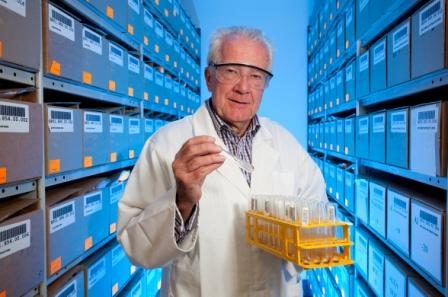Eskitis Institute chemistry students have won three of the five student awards at this year’s Brisbane Biological and Organic Chemistry Symposium (BBOCS 2013).
The annual meeting was attended by more than 150 participants and there was no shortage of tough competition.
Director of the Eskitis Institute, Professor Ron Quinn AM said he was very proud of this student success.
“Not only is this a worthy recognition of their dedication, but this also underscores the vital research links between chemistry and biology in the drug discovery work being done at the Eskitis Institute.”
1st prize for a student oral presentation
PhD student Shahan Khokhar won 1st prize for a student oral presentation: Trikentamides A-D: Indole Alkaloids from the Australia Sponge Trikentrio flabelliforme,in which he outlined his research into tryptophan alkaloids (a class of bioactive chemicals) from marine sponges.
“I’ve been successful in isolating some new chemical entities from a species of sponge from Northern Australia, and have used a combination of traditional (NMR spectroscopy) and newer and slightly unusual (computational spectroscopy) techniques to figure out what these molecules look like,” Shahan said.
“We’ve just published these results in the ACS Journal of Natural Products.”
1st prize for the best student poster presentation
Fanny Lombard, another Eskitis PhD candidate, took out 1st prize for the best student poster presentation; ‘Anomolous Intramolecular Rhodium Catalysed C-H insertion: Formation of Spiroorthoesters’.
“The spiroacetal motif is common in a wide variety of biologically active natural products from insect pheromones to anti-cancer agents and as a result, it is a privileged scaffold in drug discovery,” Fanny said.
“Our work is focused on a new straightforward methodology for the synthesis of molecules including this motif.The poster presents our synthetic strategy and the first unexpected, nevertheless interesting results.”
3rd prize in the student poster presentation category
Deborah Sneddon won 3rd prize in the student poster presentation category. Her entry was entitled ‘Development of Single Modal and Bimodal MRI/PET Imaging Agents for Imaging Tumour Hypoxia’. As part of her PhD research Deborah is investigating improved imaging for cancer.
“Cancerous tumours which lack oxygen are well known to be resistant to radio- and chemotherapy but currently there is no “one size fits all” method for their detection,” Deborah said.
“Imaging, for example MRI, PET and CT scans, provides an enhanced, non-invasive, repeatable method of detecting, staging and monitoring cancer progression.
“My research is focused on designing imaging agents to target these specific tumours so they can be easily visualized using MRI and PET.”
